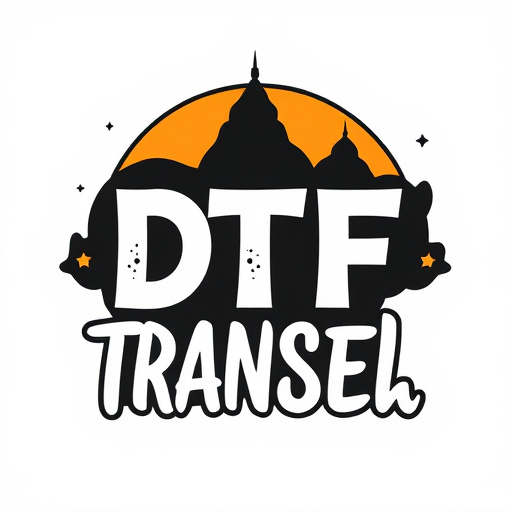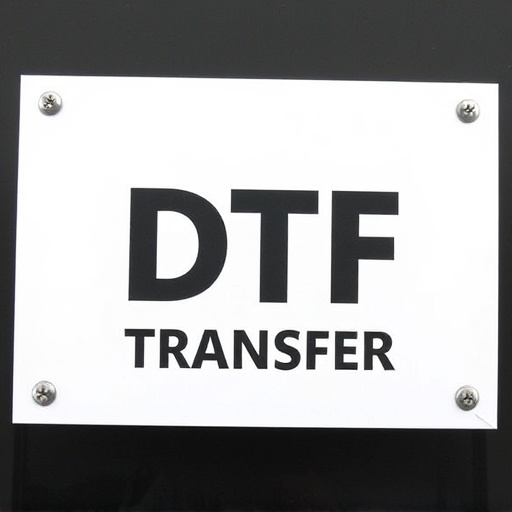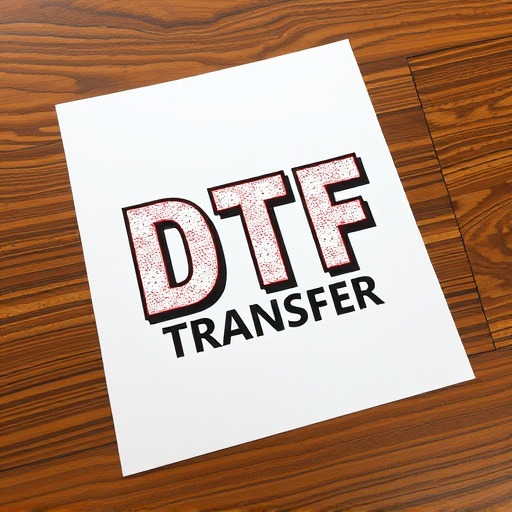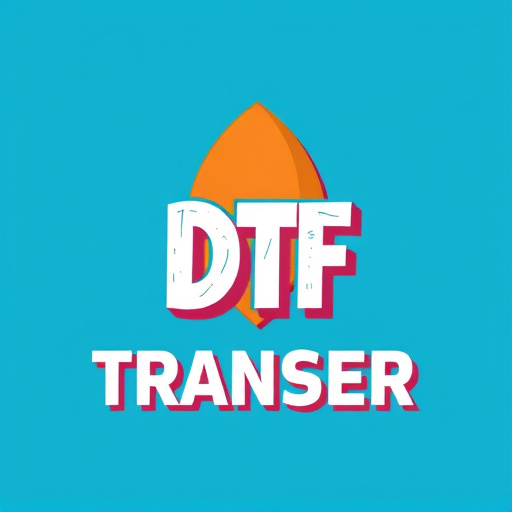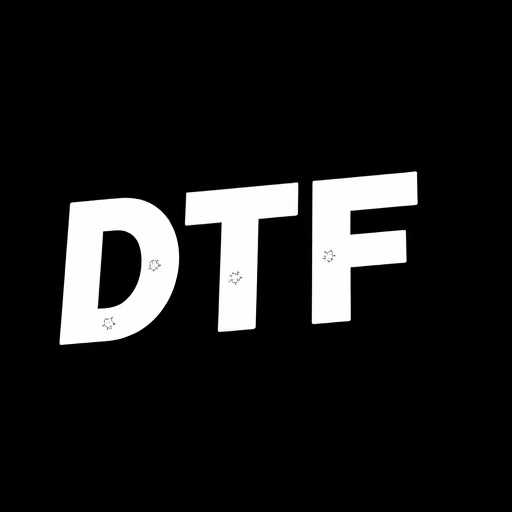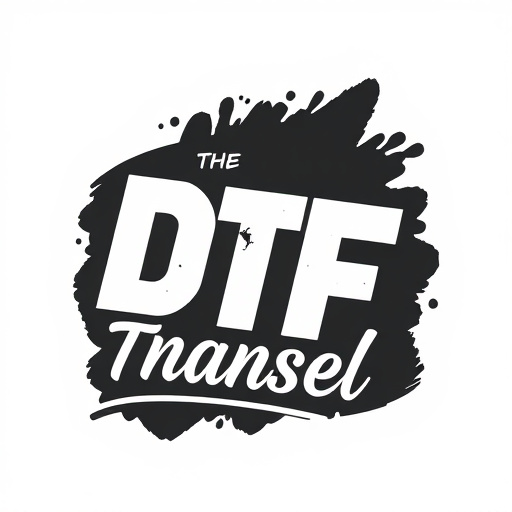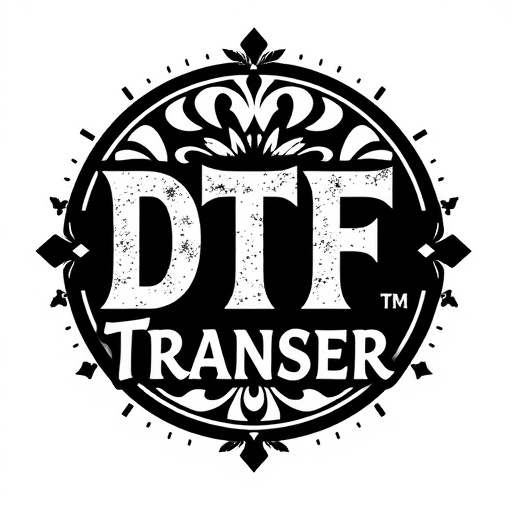Direct-to-Film (DTF) transfer is a cutting-edge printing method revolutionizing film production, offering intricate, vibrant designs on diverse surfaces. Specialized businesses refine and perfect DTF processes through advanced equipment and industry trends, ensuring superior quality and efficiency. This involves sophisticated technologies like inkjet printers and precision cutting machines, along with strategic material selection for durability and aesthetic appeal. The booming market drives demand for personalized products across fashion, merchandising, and more, challenging DTF specialists to maintain color accuracy and high resolution. Future prospects include enhanced inkjet technology and exploration of 3D printing, promising a vibrant future for DTF transfer in print-on-demand services.
In an era driven by innovative printing technologies, direct-to-film (DTF) transfer has emerged as a game-changer. This cutting-edge method allows for precise and vibrant printing directly onto various surfaces, from textiles to plastics, revolutionizing the way we create branded merchandise and marketing materials. This article delves into the world of DTF transfer, exploring its revolutionary printing technique, the critical role played by specialized businesses, essential components, market trends, challenges, and future prospects.
- Understanding Direct-to-Film (DTF) Transfer: A Revolutionary Printing Technique
- The Role of a Specialized Business in the DTF Transfer Process
- Key Components and Equipment for High-Quality DTF Products
- Market Trends and Demands for DTF Transfer Applications
- Challenges and Overcoming Them in the Production of DTF Transfers
- Future Prospects: Where is the Industry Heading with DTF Technology?
Understanding Direct-to-Film (DTF) Transfer: A Revolutionary Printing Technique

Direct-to-Film (DTF) transfer is an innovative printing technique that has revolutionized the way businesses approach film production and customization. This cutting-edge process allows for the precise application of designs, images, or patterns directly onto a film surface, enabling a wide array of creative possibilities. With DTF, businesses can offer unique, personalized products such as custom movie posters, theatrical backdrops, animation cels, and more.
The beauty of DTF Transfer lies in its versatility and efficiency. It combines the art of screen printing with modern digital technology, enabling the reproduction of intricate details and vibrant colors on various film types. This technique ensures a seamless integration of design and substrate, resulting in high-quality, visually stunning outputs that capture the essence of each project.
The Role of a Specialized Business in the DTF Transfer Process

A specialized business plays a pivotal role in refining and perfecting the Direct-to-Film (DTF) transfer process. These businesses possess expertise and resources dedicated solely to understanding the intricate details of DTF technology, enabling them to offer advanced solutions for enhancing print quality, speed, and efficiency. They invest in cutting-edge equipment and stay abreast of industry trends, ensuring their products meet the highest standards.
By specializing, these enterprises can streamline various aspects of DTF transfer, from raw material selection to post-processing treatments. Their focus allows them to optimize each step, resulting in superior film quality, consistent performance, and cost-effectiveness for clients across different industries. This level of specialization is particularly beneficial for businesses seeking high-quality, reliable, and innovative DTF solutions.
Key Components and Equipment for High-Quality DTF Products

Creating high-quality Direct-to-Film (DTF) transfer products requires a meticulous process and specialized equipment. The key components include top-tier printing technologies, such as advanced inkjet printers capable of producing intricate details and vibrant colors. These printers are matched with precision cutting machines that ensure clean, accurate cuts around the design, preserving its integrity on the final product.
Additionally, high-resolution digital imaging is crucial to capture every nuance of the original art or graphic. This is followed by a careful selection of suitable film materials, which must be compatible with both the printing and curing processes. The right combination of inks, coatings, and laminates plays a significant role in achieving superior product durability and aesthetic appeal, making it essential for any successful DTF transfer business.
Market Trends and Demands for DTF Transfer Applications

The market for direct-to-film (DTF) transfer products is experiencing significant growth, driven by a range of dynamic trends and evolving demands. Consumers are increasingly seeking innovative ways to personalize and customize various surfaces, from clothing to accessories, leading to a surge in interest for DTF transfer technologies. This trend is particularly evident among businesses and individuals looking to create unique, limited-edition items or cater to niche markets with specialized designs.
Moreover, the rise of e-commerce and online customization platforms has fueled the demand for efficient, high-quality DTF printing solutions. The ability to quickly produce custom prints on a variety of materials at scale has become a key differentiator for many businesses. As such, DTF transfer applications are becoming integral to industries such as fashion, merchandising, and even promotional products, where speed, versatility, and cost-effectiveness are paramount.
Challenges and Overcoming Them in the Production of DTF Transfers

Direct-to-film (DTF) transfer production presents unique challenges, from ensuring precise color accuracy to achieving high resolution. One significant hurdle is the variety of screen printing inks and films; each has its own properties, requiring meticulous calibration for optimal results. Overcoming this involves extensive testing and developing profiles specific to each ink and film combination.
Additionally, maintaining consistent quality across large batches is critical. This demand for consistency necessitates the implementation of automated systems and regular quality checks. By embracing innovative technologies and rigorous quality control measures, businesses specializing in DTF transfers can consistently deliver superior products, ensuring customer satisfaction and staying ahead in a competitive market.
Future Prospects: Where is the Industry Heading with DTF Technology?
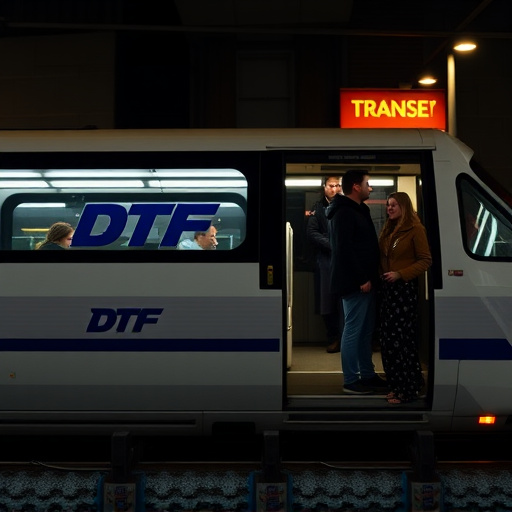
The future of direct-to-film (DTF) transfer technology looks promising, with several trends shaping its growth and evolution. One key aspect is the increasing demand for high-quality, cost-effective printing solutions across various industries, from apparel to signage. DTF technology is well-positioned to meet this demand due to its versatility and ability to produce sharp, vibrant prints on a wide range of materials.
As advancements in inkjet technology continue, we can expect DTF transfers to offer even better color accuracy, resolution, and durability. Additionally, the industry is exploring new application areas like 3D printing and smart textiles, further expanding the potential use cases for DTF transfers. This ongoing innovation ensures that businesses specializing in DTF products will remain integral in driving the future of print-on-demand and custom manufacturing.

